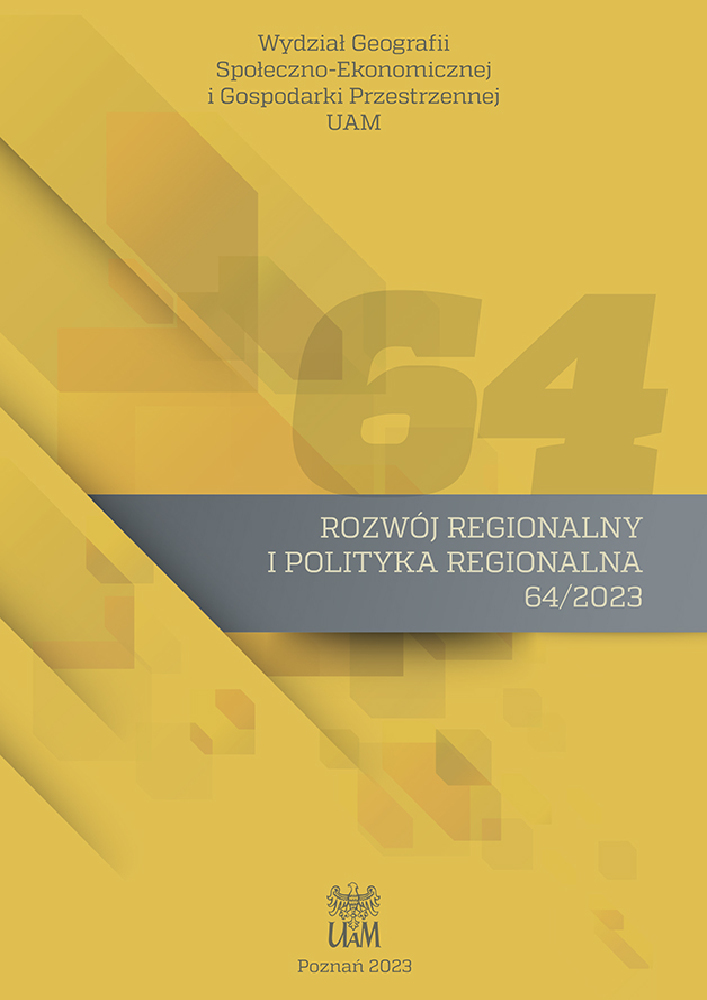Abstract
Social awareness of the important role of trees in the natural environment and in the cultural landscape has existed for centuries, but it turns out to be extremely important today, in the era of progressive climate change. The multifaceted natural, social, health, cultural, aesthetic and economic benefits provided by trees, supported by many scientific studies, are converted into monetary values, which allows to effectively use their potential in building comfort and functionality of life in urban areas. For this reason, trees in many countries are considered a national good and the green capital of cities (Szczepanowska, Sitarski 2015), and the concept of “ecosystem services” and “green infrastructure” with trees in the main role is implemented in the spatial policy of territorial units around the world. The benefits of the presence of trees dominate the possible nuisance and losses caused by trees (Rosłon-Szeryńska 2019). Nevertheless, in Poland, one can notice many problems with trees in the space of human life. The main thread is the discussion on the security risk, and the number of decisions authorizing logging is increasing year by year. The threat to safety is currently one of the important reasons for the removal of trees (Krynicki, Witkoś 2016). It is related to the financial liability of the owner of the land for damage caused by the tree in case of negligence in its care and maintenance. The Nature Conservation Act (Journal of Laws of 2021, item 1098) lists trees that threaten the safety of equipment, people or property as well as the safety of road, rail and shipping traffic, and the removal of which requires a permit from the commune without incurring fees. title. However, the lack of a method specifying the criteria of risk assessment contributes to many types of fraud. Identifying the threat and quantifying the risk associated with trees present in the cultural landscape is the basis of a properly functioning tree management system. Knowledge about the frequency and effects of falling and breaking trees allows you to make rational decisions adequate to the scale of the risk. The aim of the article is to present the problem of the threat posed by trees in Poland against the background of selected European and American countries. As part of the work, statistics of accidents and damage caused by trees during storms in the years 2000–2021 were compiled. A regional coefficient for the risk of windbreaks and overturning has been established. Own research proved that the number and effects of accidents in Poland are at a similar (low) level as in the world. Therefore, trees should be protected by taking care of their condition. Risk management guidelines are provided. The results of the research are to contribute to a better management of trees in urban areas, but also to the improvement of human living conditions in cities.
References
Ball D.J., Ball- King L. 2011. Public Safety and Risk Assessment: Improving Decision Making. Earthscan, London.
Chmielewski T., Szer J. 2018. Możliwe straty spowodowane w Polsce wichurami, trąbami powietrznymi i szkwałami. Inżynier Budownictwa: 26–31.
Czerwienic M., Lewińska J. 2000. Zieleń w mieście. Instytut Gospodarki Przestrzennej i Komunalnej, Kraków.
Dygulska A., Perlańska E. 2015. Mapa wietrzności Polski. Projekt Czysta Energia. Akademickie Centrum Czystej Energii, Słupsk.
Ellison M.J. 2005. Quantified Tree Risk Assessment in Management of Amenity Trees. Journal of Arboriculture, 31(2): 57–65. DOI: https://doi.org/10.48044/jauf.2005.007
Eiber T. 1998. Forest Insects and Disease ( http://www.dnr.state.mn.us/fild/june98/06309816.html ).
GUS. 2021. Rocznik Statystyczny Województw. Warszawa ( online: http://www.stat.gov.pl ).
Hubrig M. 2004. Analyse von Tornado‑ und Downburst ‑Windschäden an Bäumen. Forst und Holz, 59: 78–84.
Krynicki M., Witkoś K. 2016. Monitoring standardów w zarządzaniu zielenią wysoką w największych miastach Polski. Fundacja Ekorozwoju, Wrocław.
Lorenc H. 2012. Struktura maksymalnych prędkości wiatru w Polsce. [W:] H. Lorenc (red.), Klęski żywiołowe a bezpieczeństwo wewnętrzne kraju. IMiGW, Warszawa, s. 33–59.
Łozowska-Stupnicka T. 2000. Ocena ryzyka i zagrożeń w złożonych systemach człowiek–obiekt techniczny–środowisko. Politechnika Krakowska, Kraków.
Maciążek A. 2005. Pomiary wiatru. Gazeta Obserwatora IMGW, 3: 39–41.
Mell I. 2016. Global Green Infrastructure. Lessons for Successful Policy-making, Investment and Management. Routledge, Taylor & Francis Group, London–New York. DOI: https://doi.org/10.4324/9781315720968
Mizgajski A., Stępniewska M. 2009. Koncepcja świadczeń ekosystemów a wdrażanie zrównoważonego rozwoju. [W:] D. Kiełczewski, B. Dobrzańska (red.), Ekologiczne problemy zrównoważonego rozwoju. WSE, Białystok, s. 12–23.
National Tree Safety Group. 2011. Estimating the costs and benefits of changing the approach to tree safety management and the role of local risk/benefit evaluation. Centre for Decision Analysis and Risk Management Middlesex University, s. 14.
Romanowska-Słomka I., Słomka A. 2002. Zarządzanie ryzykiem zawodowym. Wyd. II. Tarbonus, Tarnobrzeg.
Rosłon-Szeryńska E. 2012. Ocena zagrożenia bezpieczeństwa ludzi i mienia powodowanego przez drzewa o osłabionej statyce. Uprawa i Ochrona Drzew, Czasopismo Międzynarodowego Towarzystwa Uprawy i Ochrony Drzew, 27: 1–89.
Rosłon-Szeryńska E. 2019. Drzewa w przestrzeni zurbanizowanej. Korzyści a zagrożenia. Wyd. SGGW, Warszawa
Solon J., Roo-Zielińska E., Affek A. i in. 2017. Świadczenia ekosystemowe w krajobrazie młodoglacjalnym. Ocena potencjału wykorzystania. Instytut Geografii i Przestrzennego Zagospodarowania Polskiej Akademii Nauk, Wyd. Akademickie SEDNO, Warszawa.
Szczepanowska H.B., Sitarski M. 2015. Drzewa. Zielony kapitał miast. Jak zwiększyć efektywność pracy drzew. IGPiM, Warszawa.
Szulczewska B. 2018. Zielona infrastruktura – czy koniec historii? Studia, 189. Polska Akademia Nauk, Komitet Przestrzennego Zagospodarowania Kraju, Warszawa.
Taszarek M., Brooks H.E. 2015. Tornado climatology of Poland. Monthly Weather Review, 143: 702–717. DOI: https://doi.org/10.1175/MWR-D-14-00185.1
Wessolly L. 1997. Metody bezinwazyjnego określania statyki drzew. Sztuka ogrodów w krajobrazie miasta. Konferencja Naukowa 20–22 czerwiec 1997. VI Targi Zieleni Miejskiej, Wrocław, s. 213–219.
License
Copyright (c) 2023 Edyta Rosłon-Szeryńska

This work is licensed under a Creative Commons Attribution 4.0 International License.

